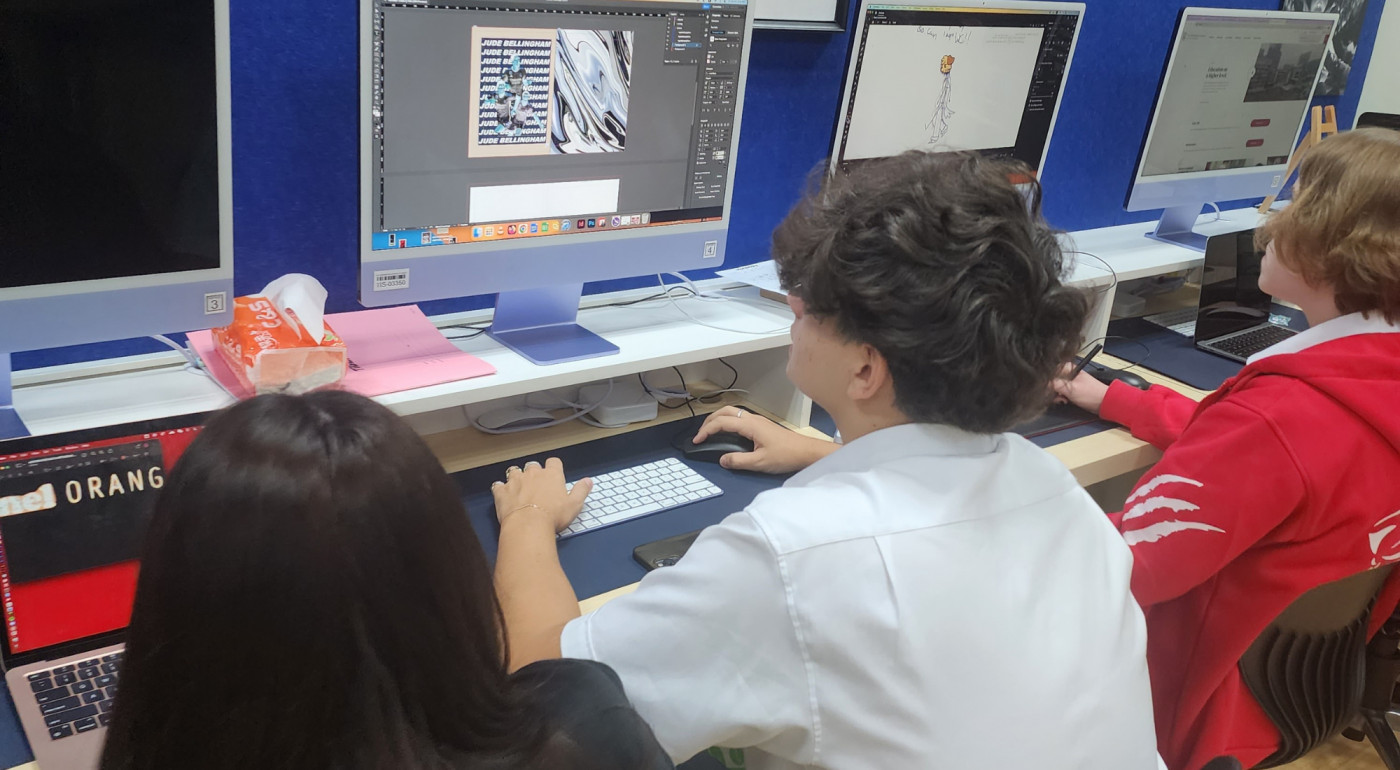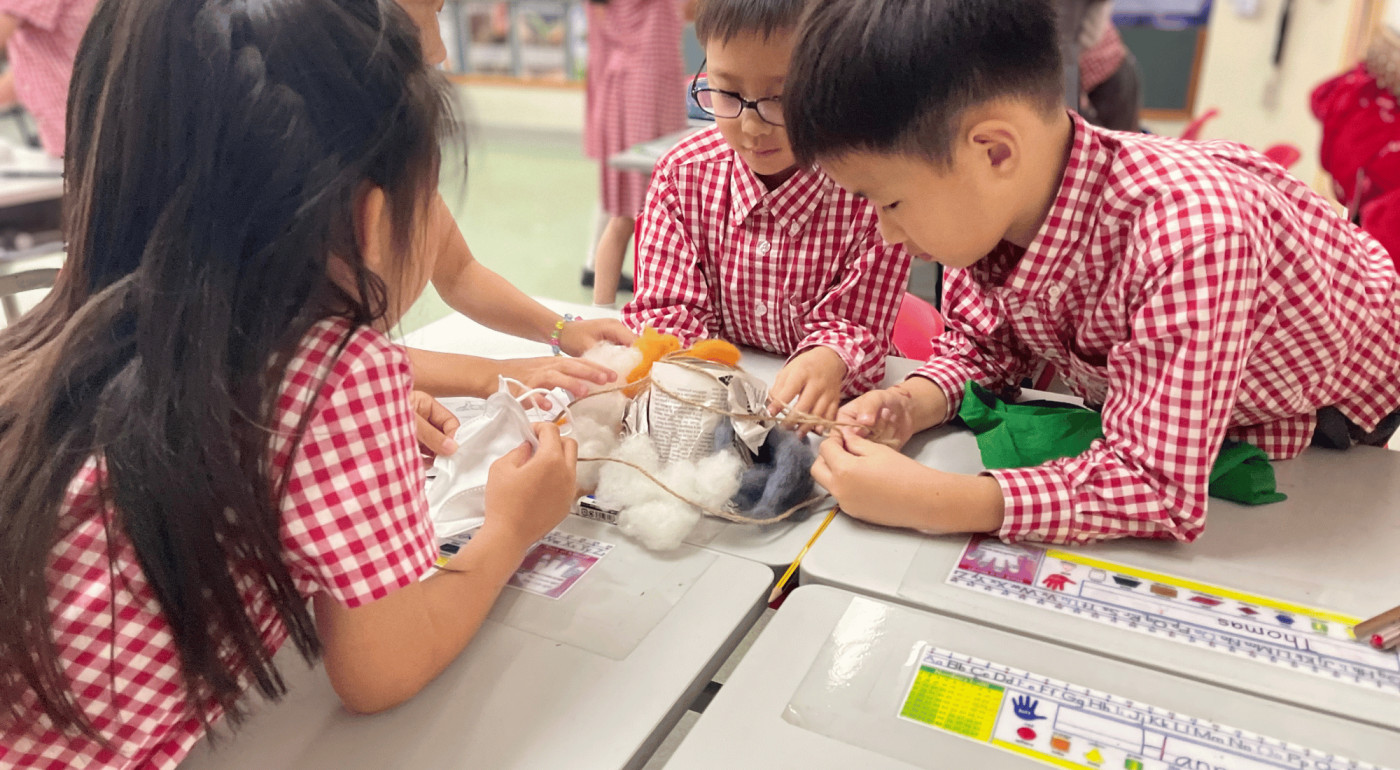
Envisioning a Future Fuelled by STEAM Innovation
In today’s relentless development of technology and science, the future workforce will need to respond to using these developments effectively and efficiently. Therefore, a STEAM education program in school is essential for equipping students with skills and knowledge needed in their future careers.
Elements of a STEAM education program:
Science
Acquiring scientific knowledge is key to gaining a deeper understanding of how the natural world functions. In addition, developing scientific laboratory investigative skills contributes not only to developing a deeper understanding of scientific concepts, but also toward developing skills in problem solving and design cycle thinking.
Technology
Technology continues to transform the way we live and work. Schools are adapting to using technology as an effective learning tool as well as a tool for production and/or streamlining of work. Exposure to various technology tools sparks creativity and critical thinking as students learn to choose the most appropriate technology for the task. Hands-on learning experiences with technology boosts engagement, making complex concepts come alive. Collaboration and communication skills flourish in tech-powered classrooms, preparing students for teamwork in diverse environments. All students need exposure to using a wide variety of digital tools in order to equip them for an ever changing future.

Engineering
Engineering requires application of scientific and mathematical principles to design practical products to address needs in our society. Engineering skills include design, testing and improving structures that have practical applications.
Art
The creative emphasis in art education is essential in producing innovative solutions to product design. Art encourages students to think outside the box, experiment with new ideas, and devise unconventional solutions to problems. It pushes them beyond merely using formulas and equations by allowing them to explore the realm of "what if" and come up with innovative ideas.
Mathematics
Mathematics is the language through which scientific and technical concepts are communicated. Imagine building a bridge without understanding the laws of physics, creating a life-saving vaccine without analysis of the results of collected test data, or designing a computer program without knowledge of the rules of logic and patterns. Math, the bedrock of the "M" in STEAM, is applied throughout a vast array of industries. Math cultivates critical thinking skills, teaching students to analyze, reason, and solve problems logically. Math isn't just about crunching numbers or doing algebra; it's about recognizing patterns, making connections, and finding creative solutions to complex problems.
What does a STEAM education program look like?
Along with teaching Math, Science, Art, and Computer coding as separate entities, a STEAM education program integrates these into having students undertake hands-on learning activities that lead toward a solution to a real world problem.
In an authentic STEAM lesson, questions are driven by the learners and failure is understood to be part of the learning process. Students have control over setting goals, choice of materials and tools, product design, production and testing. Students are required to tinker, build, test and redesign their products for improvement. This is often done in collaboration with small groups of students. This active engagement during the production process will have a fair amount of associated noise!

STEAM lessons are purposefully designed to integrate math skills of measuring and calculating. They also require use of science skills by testing in controlled conditions and analyzing data. Science concepts like force, motion, energy, stress/strain, density, etc. may be inherently addressed. Coding skills may be incorporated if robotics are involved in the project design. Audio and/or video production may also be incorporated into the project.
It is important to note that STEAM learning is not intended to replace traditional lessons in math and science. Rather, STEAM lessons are integrated with these subjects in order to improve conceptual understanding, increase knowledge retention, improve student motivation and provide opportunities for students to apply their understanding of curricular concepts to the real world.
Some examples of STEAM projects that students at TIS have completed include:
Elementary School
Creating devices that slow down the melting of ice
Design and production of collection bins for recyclable cardboard, electronics and plastic
Creating a detective investigation board highlighting suspects and clues, and using 360° cameras to create a 3-D virtual reality film production showing various clues to solve a murder mystery
Individual Art expressions that incorporate free choice for students in materials/processes to illustrate science concepts like material properties, force and motion
Making Christmas gifts for a winter market, with profits to go to charity
Creating video weather reports using green screen technology












Secondary School
Building 3-D replicas of animals / objects / buildings
Building robots
Building 3-D models of geographic landforms
Building bird houses
Building planter boxes for a rooftop garden
Use of STEAM lab materials to create a unique artistic but functioning clock
Creating a Maglev Train













10 ways STEAM education benefits students:
Students can take ownership of their learning.
Students can improve their problem solving skills by assessing the performance of their products and consider ways to improve the design and functionality.
Builds technological fluency through exposure and use of multiple types of technology.
Fosters creativity - the design and production is an opportunity to implement creative approaches
Develops critical thinking skills - the requirement to continually assess the performance of their products is a critical thinking process.
Reinforces concepts in science and math.
Develops collaboration skills.
Encourages risk taking - an IB Learner Profile. A parallel benefit is the potential for students to increase their level of tenacity when solving problems.
Provides an opportunity for students to build self confidence, where students can take pride in their accomplishments
The hands-on component improves motor skills.
A STEAM education program equips students with a wide array of skills that will be essential for their future careers: collaboration, critical thinking, reflection, computational thinking, innovation, creative thinking and problem solving. Exposure to a wide variety of technologies and opportunities to incorporate these technologies into their products will serve students well in our tech-based society. Another byproduct of STEAM education is an increased level of engagement with curricular concepts, allowing for deeper understanding and retention.
References:
https://www.linkedin.com/pulse/impact-importance-stem-education-preparing-future-innovators/
https://www.isct.co.za/education/steam/
https://elearning.tki.org.nz/Teaching/Future-focused-learning/STEM-STEAM



